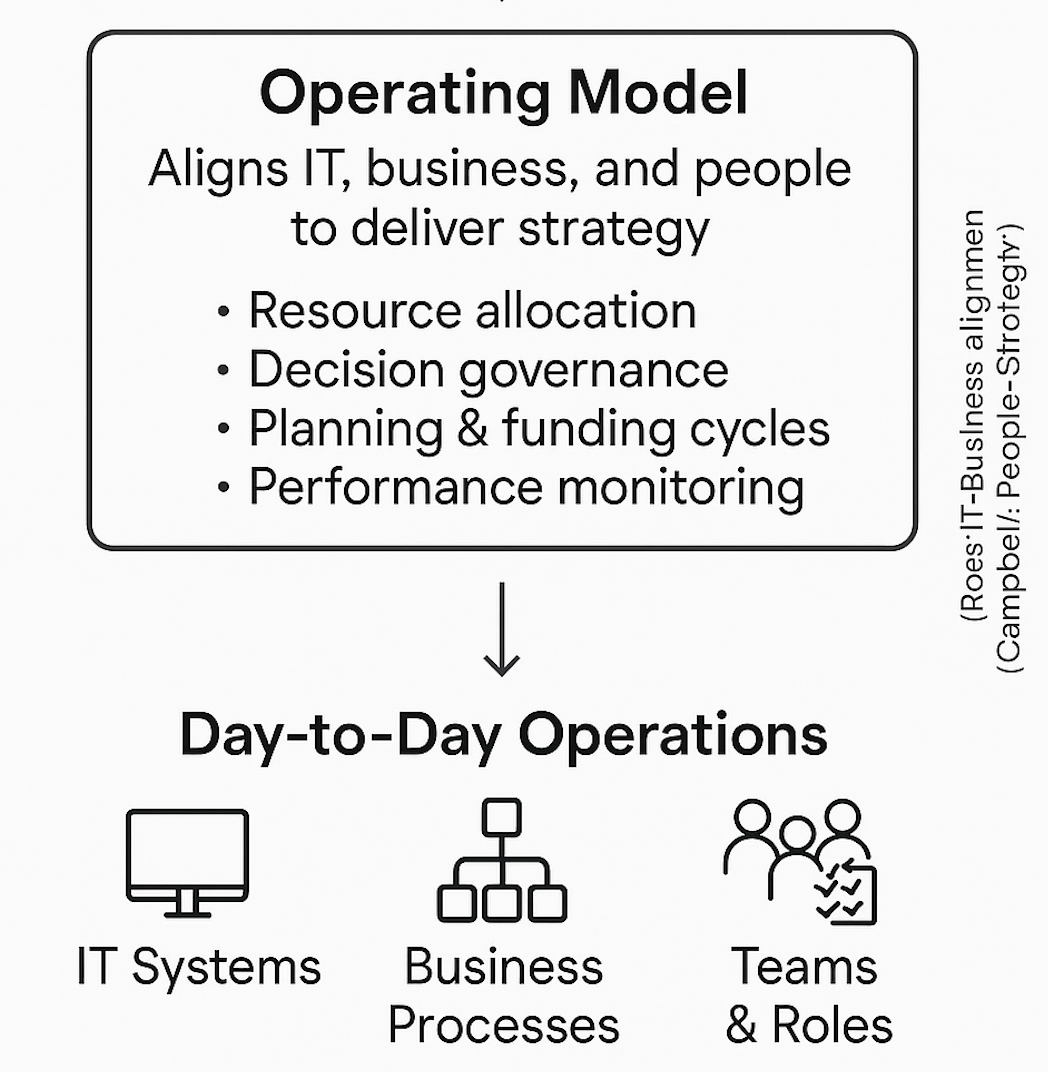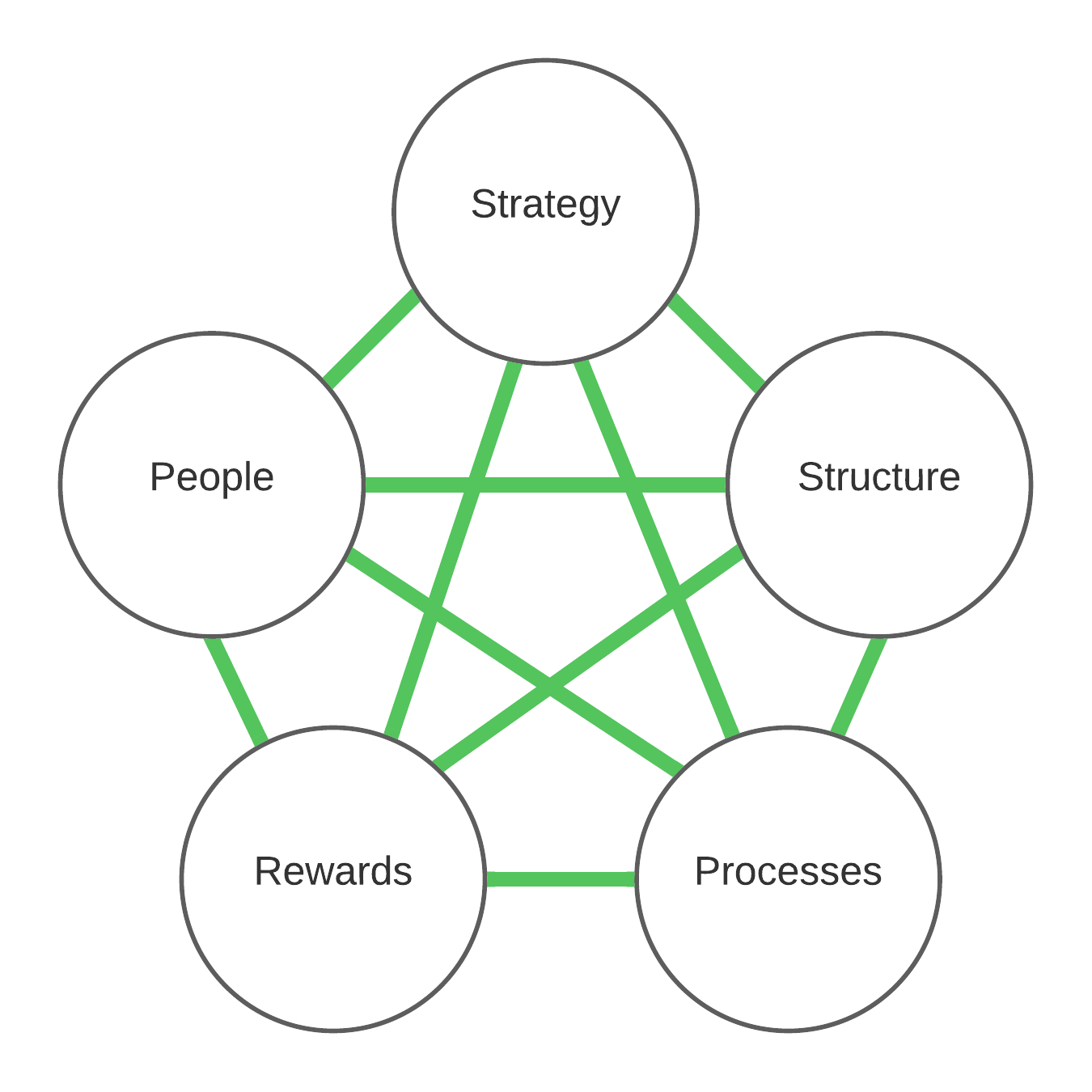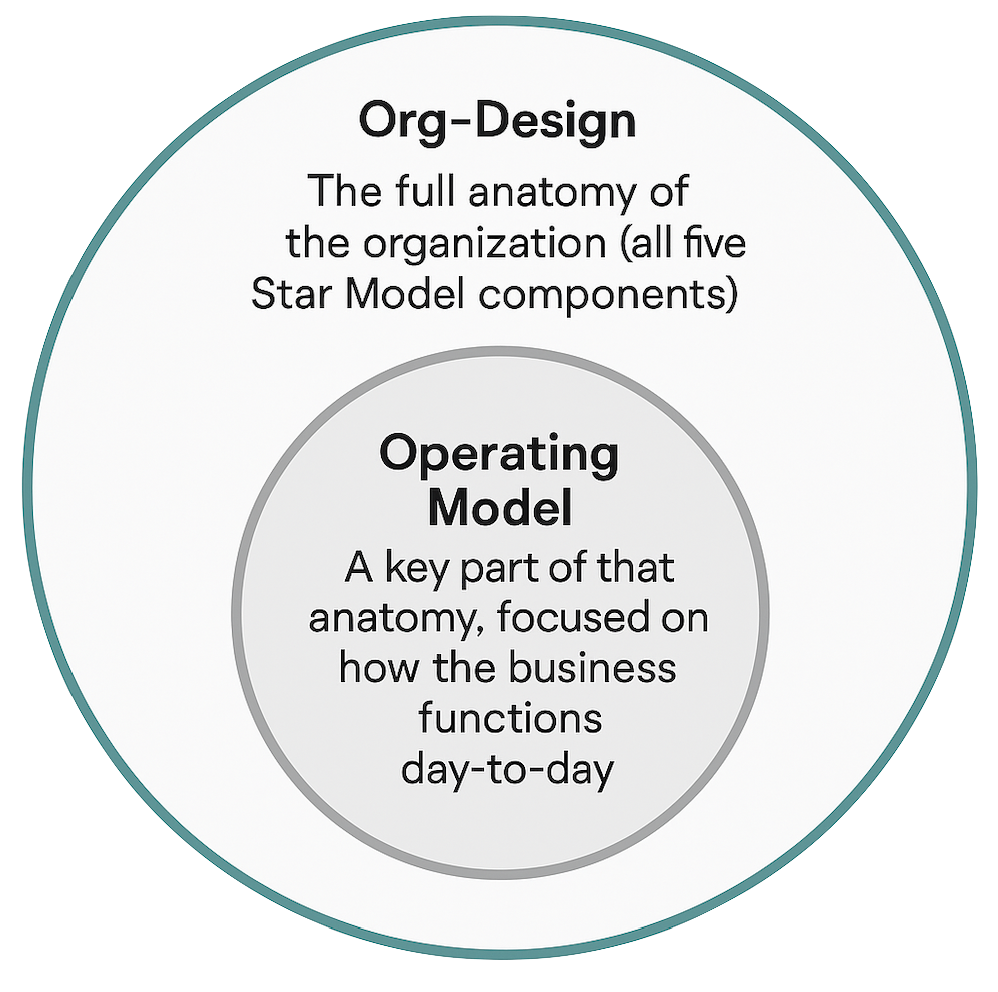If you confuse operating models with org design, you’re likely solving symptoms while the system stays broken
What is an Operating Model?
One of the clearest and most enduring definitions comes from Jeanne W. Ross at MIT Sloan. In her 2006 book (Ross, Weill & Robertson), she described an operating model as:
“The necessary level of business process integration and standardization for delivering goods and services.”
Ross’s work illustrated how an operating model is essential for aligning IT and business functions, guiding the degree to which processes are unified across the enterprise.
More recently, Campbell (2021) emphasised that operating models are also critical for aligning people and delivering strategy, especially in day-to-day operations. In practice, operating models address the day-to-day mechanics of how a business runs:
- How resources are allocated
- How decisions are governed
- How planning and funding cycles work
- How performance is monitored

Figure 1. Operating Model overview
However, operating models are too narrow to cover the full scope of organization design. They focus mainly on operational processes and governance, but do not encompass all the interdependent elements that shape how an organization works.
In Creating Agile Organizations (CAO), this narrower focus is recognised: the operating model is treated as a design choice mainly within the processes component of the Star Model, ensuring governance and decision-making support the broader organisational design.
Star Model for Organisation Design
The Star Model by Jay Galbraith remains one of the most referenced frameworks. It shows that organisations are systems made up of five interdependent components:
- Strategy – Defines direction and priorities
- Structure – How teams and units are organized
- Processes – Workflow, decision-making, and information flow
- Rewards – Incentives and performance measures
- People – Skills and capabilities
Effective design aligns all five components to enable strategic execution. This system view is also the foundation of the CAO approach, which builds on the Star Model with concrete design guidelines for strategic alignment with org-design.
Figure 2. J. Galbraith Star Model
Mapping the Two Together
So, where does the operating model fit within the broader concept of organisation design?
Think of it this way:
- Organisation Design is the full system (Star Model).
- The Operating Model is a subset, primarily focused on execution and processes
So, Org-Design = The system design of the organisation (all five Star Model components), while Operating Model = A key part of the design, focused on how the business functions day-to-day.

Figure 3. Venn Diagram Operating Model Org Design
Culture Eats Strategy Fix the System.
Misusing these terms has practical consequences.
When someone says, “Let’s redesign the operating model,” they are by definition optimising locally without considering other essential elements of the organization. On the other hand, if someone says “Let’s redesign the organization” but only tweaks the operating model, they may under-scope the change effort.
- Only tweaking the operating model? → Risk of local optimization without systemic change.
- Trying to fix culture without aligning the system? → Old behaviors will re-emerge, culture will eat strategy 😊.
Getting the terminology right matters. It enables more accurate analysis and ensures design efforts are focused on the whole not its parts taken separately,.
CAO makes this explicit: adaptability comes from systemic design, not from tinkering with operating models alone. It means aligning strategy with all components of the Star Model and defining your products, not just adjusting governance or funding cycles.
Learn More
Check out the cao website and learn all about designing and guiding agile organizations.
Sources
- Ramos, C., & Pavlichenko, I. (2022). Creating Agile Organizations: A Systemic Approach. Addison-Wesley Professional.
- Ross, J. W., Weill, P., & Robertson, D. (2006). Enterprise Architecture as Strategy: Creating a Foundation for Business Execution. Harvard Business School Press.
- Campbell, A. (2021). Why You Need an Operating Model: To Align Your People and Deliver Your Strategy. SSRN.
- Galbraith, J. R. (2014). Designing Organizations: Strategy, Structure, and Process at the Business Unit and Enterprise Levels. Jossey-Bass.
